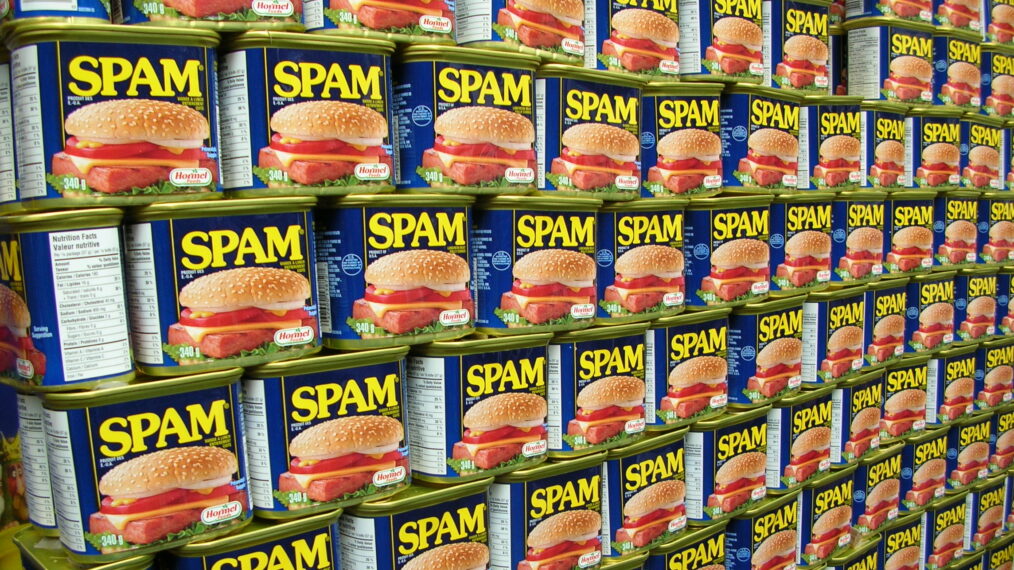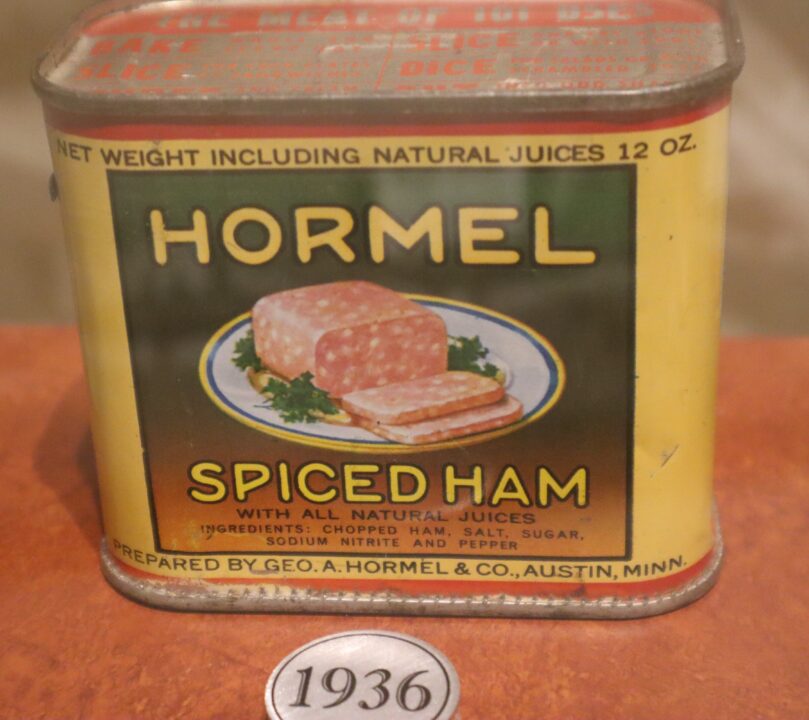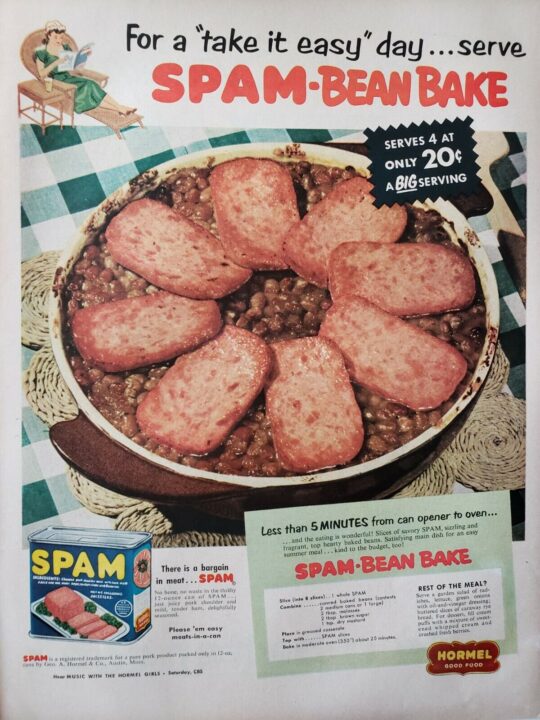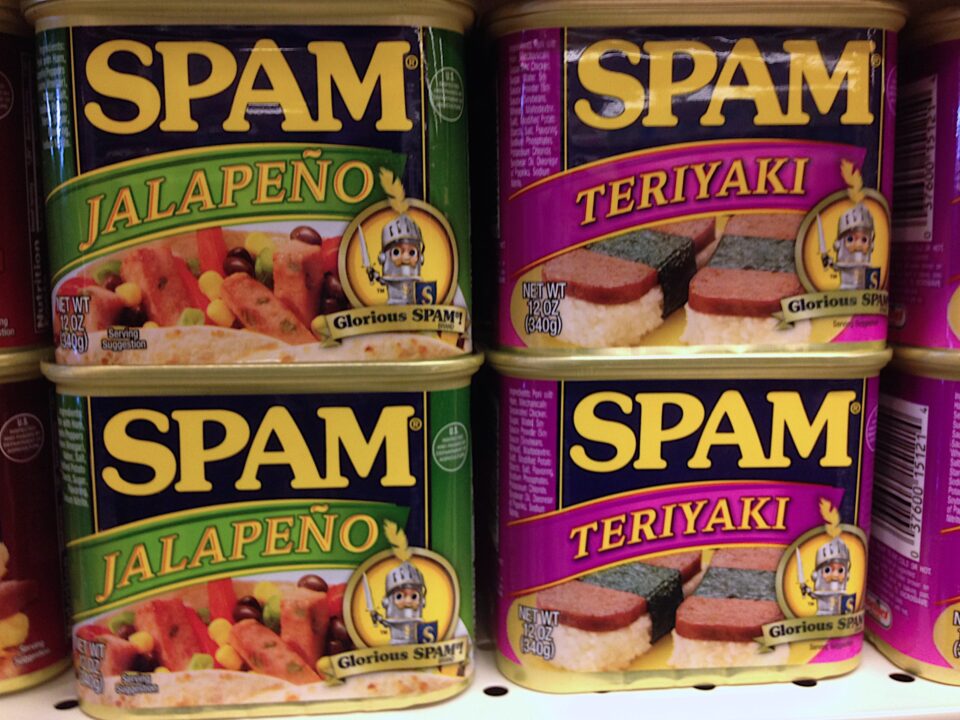America Has Been Eating Spam Since 1937

Remember waking up to your mom making you Spam and eggs for breakfast, or perhaps it was part of dinner? Spam is one of those divisive foods, with people either really loving the six-ingredient pork squares or really hating them – kind of like that liver you were probably forced to eat too. Gaining its popularity during the Depression era as a cheaper way to get in some protein, it was made of six simple ingredients including pork, water, salt, sugar, potato starch, and sodium nitrate, giving it that ultra-salty flavor.

Wikipedia/Public Domain
George A. Hormel first started a meatpacking business in 1891 in the town of Austin, Minnesota. In 1929, his son Jay Hormel took over. While many people have a complicated relationship with Spam and reportedly even Jay, who brought Spam to the masses, once showed regret for its creation but often said that he ate it at home. After seeing the popularity of canned lunchmeat, shaved by butchers, he wanted to figure out a way to market a product that was easier to purchase and eat. Finally, it made its way into the American grocery store in 1937; now, it is available in over 44 countries and has sold over eight billion cans… yes, billion.

Wikipedia
Hormel employees helped to perfect the recipe and a way to can the pork in a vacuum to keep it fresher for a longer period of time. The recipe was also a way to repurpose pork shoulder which is often considered undesirable by butchers and consumers. The simple recipe remained the same until 2009 when they added potato starch to try to soak up the gelatin layer that naturally forms, creating a better aesthetic look. While many have wondered what the name stands for or means, Hormel once said it was a combination of the words spice and ham.

Via Ebay
By the late ’30s, some people were eating Spam but it didn’t grow in popularity or perhaps disdain until World War II. The U.S. military purchased canned meats including Spam for soldiers. However, soldiers soon complained about having to eat it three times a day. After the war, many soldiers wouldn’t touch the stuff at home and it became a bit of an ingredient instead of a main dish in many households. The ’50s & ’60s housewives saw recipes such as Spam and macaroni loaf, Spam and eggs, and a Dixie Bake, featuring Bisquick biscuits.
These days, Spam can be seen as a cultural or nostalgic choice, with chefs adding it to more elevated dishes. It is particularly popular in Hawaiian and Asian cuisine, often served with rice or pineapples. The Food Network even boasts 14 ways to use a can of Spam, ranging from classic recipes to more unique dishes like turning it into fries or making sushi with it. Hormel has also mixed it up and now offers different varieties including Black Pepper, Jalapeño, Chorizo, and Teriyaki. For you major lovers there is even a Spam Museum you can check out.
Some only purchase the product when times are tough and other types of meat are too expensive. Spam has seen a sales jump in recent years with the rise of inflation and previously had a sales bump in 2008’s recession and of course, during the Depression.

PxHere
What’s your take on Spam… do you love it or hate it? If you love it, share your favorite recipe or way to cook it with us!

Vintage Brands
June 2023
Look back at memorable celebrity endorsements, network sponsorships and just plain bizarre ads over time
Buy This Issue